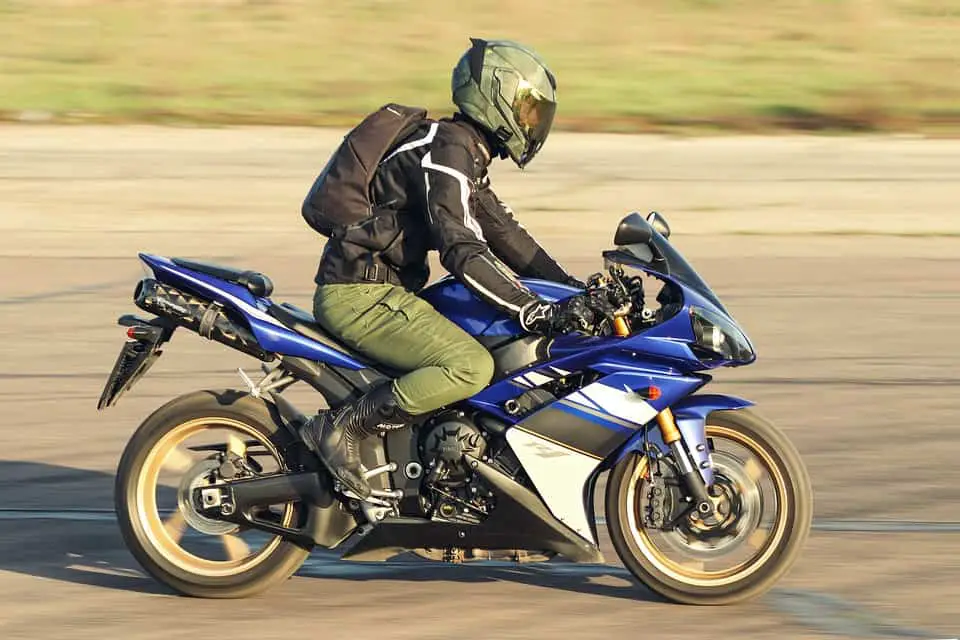I can fully understand the void left in you when you climb on your motorcycle, and your bike won’t start due to a flat battery. Usually, this happens when you may be in a hurry to get somewhere or looking forward to a good cruise. You may be thinking, if you can jumpstart your bike, would it charge while riding?
Between twenty to a thirty-minute drive on the road is usually enough to recharge from a usual start. However, if you have jumpstarted the battery from being too low flat or dead, it may not restart from the electric starter after being turned off. That is when a battery charger is required.
Motorcycle batteries work similarly to car batteries. So, if you use it often, the likelihood of you coming across a flat battery is slim depending on your battery’s health (or if you don’t forget the headlights on). With that said, what else is there to know about your bike’s battery?
Can You Charge the Battery By Leaving The Bike Idling?
Letting your bike idle to charge the battery is not very effective, and it won’t restore the battery’s full charge.
Most alternators only put approximately 1 amp into the battery during idle, which is hardly enough to make a difference. Still, while you’re riding regularly, that amount will be over ten amps if you’re not crawling too slowly.
To give it a boost while idling, you could hold the throttle at 4000rpm for 10 minutes, but your neighbors and their dogs (and maybe your wife) may not like you very much for doing that.
If your motorcycle alternator can recharge your dead battery, you’ll probably need to ride the bike on the road to get the alternator to operate correctly.
In most situations, a road trip is sufficient to recharge for typical use. If the battery is very low or dead, it may not restart after being turned off. If this occurs, I recommend using a battery charger to restore the battery to full charge.
Regardless of the sort of motorbike you possess, it will include an alternator to keep your battery charged while you ride. Riders rely on this as a critical safety element. However, if your bike is having trouble starting or your tester shows your battery is dead, it’s time to replace it.
How Long Should Your Motorcycle Battery Last?
That is all dependent on you, my friend! While most batteries can be expected to live approximately three years if properly cared for, there is a lot you can do to change that. Depending on how you treat your battery, you can pamper your battery and get 5 to 6 years out of it, or you can destroy it before it even reaches its first birthday.
The most frequent way for riders to destroy a battery is to frequently let it die entirely, which is an excellent reason why trying to charge your flat (or dead) battery while riding wouldn’t be the best way to deal with it.
A lead-acid battery’s nature is permanently damaged every time it runs down and loses a portion of its charging capacity. It can only happen a few times before the battery is completely dead.
What Causes This To Happen?
The following are a few of the most prevalent reasons:
- Allowing a bike to sit over an extended length of time.
- Only riding short distances (doing so prevents the bike’s charging system from fully charging the battery).
- Using a lot of electrical equipment on a motorcycle is not a good idea (these drain the battery much quicker than a stock bike would).
- Accessories or wires that are defective or poorly placed.
- Using the wrong sort of charger and charging too much or too little.

How Long Do Battery Chargers Take?
Most motorcycle batteries in excellent condition and used regularly require around 2-3 hours of charging with a smart charger. However, this is dependent on several factors, including the kind of battery, when it was last used, and how quick the charger is.
A smart charger can usually recharge your battery securely. If your battery is capable, it won’t overload it and can charge at a rapid pace. Older motorbike chargers may cause irreversible harm to your battery by overcharging it.
Another excellent characteristic of these smart motorbike chargers is that they can charge safely by trickling.
On the other hand, if your battery takes an eternity to charge, it’s time to inspect your motorcycle’s battery. It’s time to check if your motorbike isn’t starting normally, the battery doesn’t appear to retain a charge, or it doesn’t charge effectively.
You may accomplish this by physically inspecting the terminals for cracks, leaks, or corrosion. A smart charger for motorcycles can also help you figure out if it can retain a charge, and a multimeter can show you how many volts are available.
If you don’t have access to a smart motorbike charger, you can use an older motorcycle charger. A motorbike battery will typically take anything from 4 to 24 hours to charge. When using this charger, you must periodically check the voltage to ensure that the procedure is complete.
You should also be aware that if the charger does not include a “float mode,” which ensures that it won’t overload, charging it at the lowest possible rate, ideally at 1-2 amps, is highly recommended. However, if your battery has been damaged, has gone flat, or is no longer accepting a charge, it may be necessary to replace it.
It would be best if you also considered charging your battery regularly to keep it in excellent condition. It is less expensive, and you will get the most life out of your battery.
Conclusion
From a healthy start, day-to-day driving will recharge your battery. However, trying to charge up your dead battery by riding is not advisable as it may damage your battery in the long run, and your electronics (such as your dashboard electronics) may not function correctly.
Charging a completely dead battery with a smart charger or a standard motorcycle battery charger is recommended. Getting the battery to 80% or fully charged is recommended if you wish to increase your battery’s longevity; your bike will do the rest with your daily riding.
